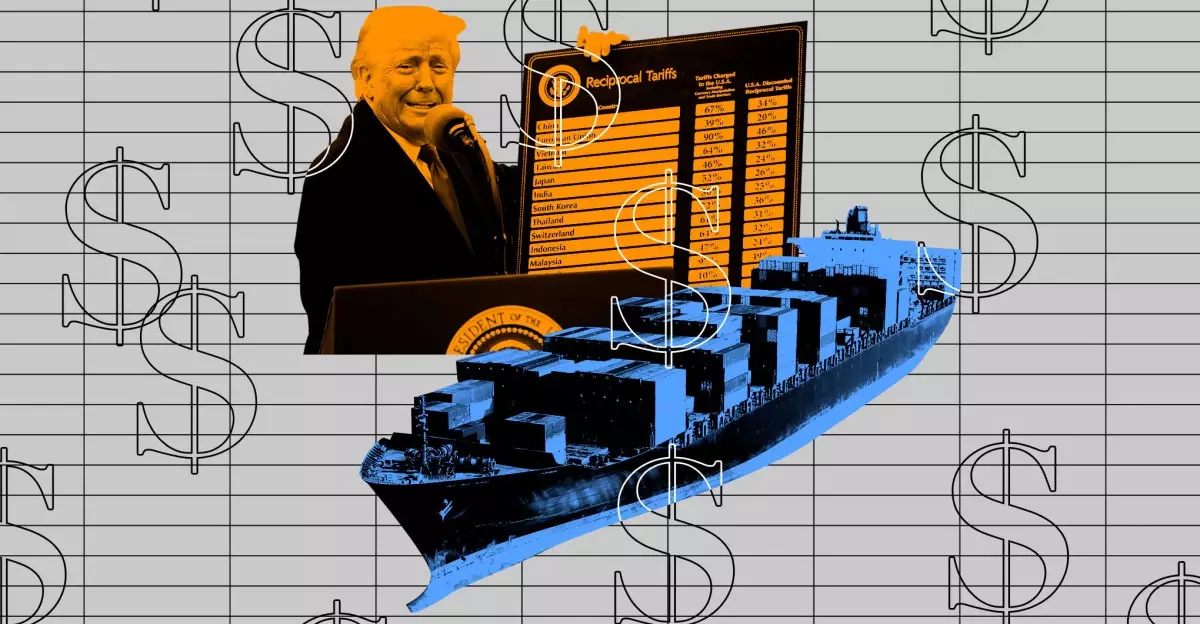In recent years, U.S. trade policies have been a rollercoaster ride, with shifting tariffs and exemptions that affect various sectors, especially technology. The interplay between the U.S. government and international trade partners, particularly China, can sometimes feel like a game of chess where stakes are high and the rules change frequently. The recent update from Customs and Border Protection (CBP) reveals that certain popular consumer electronics are exempt from newly imposed tariffs, a development that offers a glimmer of hope amid the tumultuous trade landscape. However, understanding the implications of these changes requires scrutinizing both the details and context of these exemptions.
Consumer Electronics: A Targeted Exemption
The updated guidance from CBP specifically excludes essential tech items such as smartphones, laptops, and memory chips from the hefty 125% tariffs introduced during the Trump administration. This is a significant shift, potentially mitigated by the reality that other tariffs, previously instituted, still loom over these products. While the exemption is undoubtedly a win for consumers and tech companies, the landscape remains nuanced. It is crucial for stakeholders to recognize that not all tariffs have been lifted; rather, a selective reprieve has been granted amidst broader economic strategies.
This targeted exemption highlights the U.S. government’s recognition of the critical role that consumer technology plays not only in daily life but also within the larger economy. As companies like Taiwan Semiconductor Manufacturing Co. rely on the smooth import of machinery necessary for semiconductor production, the move reflects an understanding that certain sectors should be treated with care to foster innovation and maintain competitive edge.
The Fog of Tariff Strategies and Their Impact
Yet, the lifting of specific tariffs does not mean a return to an unimpeded trade environment. The complexities of multiple tariffs, including a new emphasis on leveraging duties to address issues beyond trade, complicate the landscape. For instance, some electronic goods still face a 20% duty linked to efforts to combat the flow of fentanyl from China. This dual-purpose tariff strategy places businesses in a precarious position, where they must navigate not only trade costs but also the socio-political equations tied to their imports.
Moreover, businesses are caught in the tension of passing on costs to consumers versus absorbing them in an already competitive market. A glance at pricing strategies reveals the immediate effects of tariff policies: Sony has adjusted prices for its televisions, while other companies, such as OnePlus, have discreetly raised prices alongside the looming threat of tariffs. A hesitance to act rashly reflects the volatility and uncertainty that businesses face as they attempt to predict the long-term implications of ongoing trade strategies. Strategic decisions, such as Nintendo delaying preorders or Apple rushing shipments from alternative locations, underscore the tumultuous environment companies must navigate.
Consumer Response and Market Expectations
As news of these tariff changes rolls out, consumer reactions are just as critical to observe. With the expectation of price hikes on popular devices lingering in the air, the consumer market is poised for a critical juncture. How will consumers respond to higher prices, and will they maintain their loyalty to brands that become more expensive due to tariffs? This question remains contingent on brand perception, product necessity, and the overall economic sentiment in the nation.
Consumers may once again find themselves in a dilemma: Should they rush to purchase products now while prices remain relatively stable, or wait, possibly in hopes that further policy reversals will occur? The uncertainty surrounding pricing strategies and product availability is likely to generate a ripple effect throughout the market, potentially impacting everything from consumer electronics to broader economic indicators.
Looking Ahead: The Long Game of Trade Policies
While the immediate exemption of certain tech products from tariffs appears to offer relief, it is imperative to look beyond the surface. The interplay of tariffs and trade policies is far more complex than simply categorizing them as beneficial or detrimental. The U.S. administration’s ongoing reshuffling of economic strategies creates ripples that will be felt for years to come. For industry players, staying agile and prepared for quick adjustments in response to these policies will be pivotal in an era where the only certainty is uncertainty.

